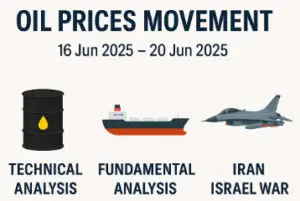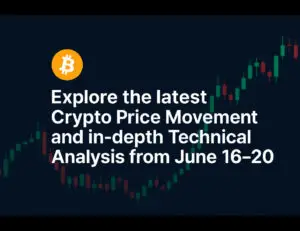Nasdaq Composite
The Nasdaq Composite isn’t just another market index—it’s a living chronicle of innovation, ambition, and human ingenuity. From its humble beginnings in the early 1970s to its towering peaks in the digital age, the Nasdaq Composite has captured our collective journey into the information economy. In this comprehensive guide, we’ll walk through:
-
What the Nasdaq Composite is and why it matters
-
How it’s calculated and adjusted over time
-
Who the major players are and what sectors they represent
-
When and why the index has soared or stumbled
-
Where you can tap into its growth through real-world investment vehicles
-
How to interpret its signals for smarter decision-making
-
The human stories behind the numbers: the entrepreneurs, visionaries, and everyday investors shaping its path
Pull up a chair, grab a cup of coffee, and let’s explore the Nasdaq Composite together—through data, narrative, and a distinctly human lens.
What Is the Nasdaq Composite and Why Should You Care?
Imagine a marketplace humming with excitement, where the newest technologies, boldest startups, and global disruptors all rub shoulders. That’s the Nasdaq exchange in a nutshell—and the Nasdaq Composite is the grand scoreboard, tracking more than 3,000 listed companies from every corner of the globe.
-
A Technology Beacon: Roughly half of the index’s value comes from tech giants—firms like Apple (AAPL), Microsoft (MSFT), and NVIDIA (NVDA). When you read headlines about semiconductor shortages or AI breakthroughs, the Nasdaq Composite is often the first to move.
-
A Growth Barometer: Unlike more evenly balanced indexes (think the S&P 500), the Nasdaq Composite skews toward companies in rapid-growth phases—sometimes rewarding bold leaps forward, other times punishing overreach.
-
A Global Showcase: Although U.S. firms dominate, scores of international listings—from biotech firms in Europe to e-commerce startups in Asia—add diversity (and occasional volatility) to the mix.
Whether you’re allocating a retirement portfolio, evaluating a day-trade idea, or simply curious about the market’s tech heartbeat, understanding the Nasdaq Composite can sharpen your perspective.
A Brief History—From Base 100 to Today’s Digital Frontier
The Early Years (1971–1985)
-
Launch: February 5, 1971 with a base value of 100 points. At the time, Nasdaq was pioneering electronic quotes—no trading floors, just computers and telecommunications lines.
-
Steady Growth: By 1985, the Composite had climbed into the mid-400s. Early adopters of computing and networking technologies drove much of that advance.
The Nasdaq Style—Dot-Com Euphoria & Crash (1995–2002)
-
Surge: In the late ’90s, internet startups flooded the index. From 1995 to early 2000, the Composite rocketed from ~1,000 to over 5,000 points—a five-fold gain in just five years.
-
Bubble and Bust: Overcrowded markets, unproven business models, and skyrocketing valuations ended in March 2000 at 5,048. By October 2002, the index had plummeted below 1,200—a nearly 80% retreat, wiping out dreams overnight.
The Recovery & New Paradigm (2003–2008)
-
Resurgence: Tech companies refocused on revenue and profitability. Giants such as Google (IPO 2004) and Apple (iPod generation) fueled a climb back to ~2,800 by late 2007.
-
Global Financial Crisis: A broader credit crunch knocked the Composite down to ~1,300 in March 2009, undercutting both tech and traditional firms.
The Modern Era (2009–Present)
-
Bull Run: Post-2009 Federal stimulus and the smartphone revolution pushed the Composite from 1,300 to over 9,000 by 2015—and beyond 20,000 by 2021.
-
Pandemic Shock & Recovery: In March 2020, the index briefly dipped to ~6,800. By year’s end, working-from-home and e-commerce winners drove it past 12,000.
-
As of June 2025: The Composite hovers around 19,600—a testament to AI stocks, semiconductor leaders, and resilient entrepreneurs.
How the Index Works—Calculations Made Simple
At its core, the Nasdaq Composite is market-cap weighted, which means that each company’s influence on the index is proportional to its total market capitalization (share price × shares outstanding).
-
Aggregate Market Cap: Sum of all constituent market caps.
-
Divisor Adjustment: To maintain continuity when corporate actions occur (stock splits, spin-offs, additions/removals), a proprietary divisor is tweaked.
-
Index Level:
Index=∑(Market Cap)Divisor\text{Index} = \frac{\sum (\text{Market Cap})}{\text{Divisor}}
This method ensures a smooth, fair reflection of market moves while accommodating real-world changes in the constituent universe.
Who’s Who—Breakdown of Key Sectors & Leaders
Sector Weightings (Approximate)
-
Technology: 48%
-
Consumer Services: 15%
-
Healthcare & Biotech: 10%
-
Financial Services: 8%
-
Industrials & Others: 19%
Top 10 Companies by Weight
| Rank | Company | Ticker | Weight (%) | Role in the Index |
|---|---|---|---|---|
| 1 | Apple Inc. | AAPL | 12.5 | iPhone/iPad ecosystem, services revenue growth |
| 2 | Microsoft Corp. | MSFT | 11.0 | Cloud leadership (Azure), Office 365, AI tools |
| 3 | Amazon.com Inc. | AMZN | 8.7 | E-commerce, AWS cloud platform |
| 4 | Alphabet Inc. (A) | GOOGL | 7.3 | Google Search, YouTube, cloud, AI |
| 5 | NVIDIA Corp. | NVDA | 6.2 | GPUs for gaming, data centers, AI training |
| 6 | Meta Platforms | META | 5.1 | Social ads, metaverse investments |
| 7 | Tesla Inc. | TSLA | 4.4 | Electric vehicles, energy storage |
| 8 | Adobe Inc. | ADBE | 2.9 | Creative/cloud software suite |
| 9 | PayPal Holdings | PYPL | 2.1 | Digital payments network |
| 10 | Netflix Inc. | NFLX | 1.8 | Streaming entertainment |
Note: When Apple sneezes, the Composite sometimes catches a cold. High concentration means a handful of giant firms can sway the entire index—both up and down.
Reading the Tea Leaves—Performance & Volatility
Key Performance Metrics as of Mid-2025
-
Year-to-Date Return: +1.6%
-
52-Week Range: 14,784 – 20,205
-
Average Daily Volume: ~1.3 billion shares
Volatility Indicators
-
30-Day Historical Volatility: ~18% (higher than the S&P 500’s ~14%)
-
Beta vs. S&P 500: 1.25 (indicates greater sensitivity to market swings)
Notable Drawdowns
-
Dot-Com Crash: –78% from peak
-
Global Financial Crisis: –55% from 2007 high
-
COVID-19 Sell-Off: –30% in March 2020
These episodes remind us that rapid growth narratives can unravel—and that timing, risk management, and diversified exposure are vital.
What Drives the Nasdaq Composite? The Human Factors
-
Technological Breakthroughs
-
AI & Machine Learning: Companies like NVIDIA and specialized software providers see surges when AI demos go viral.
-
Semiconductor Innovation: Foundries pushing process nodes (e.g., TSMC’s 3 nm chips) can send entire supply chains into a frenzy.
-
-
Monetary Policy & Interest Rates
-
Low rates can propel growth stocks by making future earnings more valuable today.
-
Fed rate hikes, by contrast, increase discount rates and can dampen lofty tech valuations.
-
-
IPO Waves & New Listings
-
Freshly minted firms (think Uber, Coinbase, Rivian) inject both excitement and dilution.
-
High-profile direct listings or SPAC merges often spark retail investor interest.
-
-
Geopolitical News
-
Trade tensions, export controls (semiconductor embargoes), and regulatory scrutiny (antitrust probes) all shape investor sentiment.
-
-
Retail Investor Sentiment
-
Social media forums, meme-stock episodes, and easy-access broker apps can flash-melt volatility in minutes.
-
Practical Ways to Participate
Passive Approaches
-
ETF Exposure:
-
QQQ tracks the Nasdaq-100 (largest 100 non-financial names).
-
ONEQ mirrors the full Composite.
-
-
Index Mutual Funds: Some funds aim to replicate the Composite’s performance with periodic rebalancing.
Active Strategies
-
Sector Rotation: Move between tech-heavy and defensive sectors based on macro-economic cycles.
-
Swing Trading: Capitalize on short-term momentum swings—often triggered by earnings beats/misses.
-
Options Plays:
-
Covered Calls for income generation.
-
Protective Puts to hedge large positions during anticipated market stress.
-
Risk Management—Because Humans Get It Wrong, Too
-
Concentration Risk: Remember, 10 stocks can drive ~60% of the index’s return.
-
Valuation Risk: Current forward P/E sits near 25×—above its long-term average of ~19×.
-
Liquidity Crunches: Flash crashes (e.g., the 2010 “Flash Crash”) show how thin markets can briefly become.
-
Behavioral Pitfalls: FOMO (Fear Of Missing Out) and panic selling can both lead to subpar outcomes.
Frequently Asked Questions
-
Q: Why is the Nasdaq Composite more volatile than other indexes?
A: Its tech and small-cap tilt amplify swings—good news during booms, painful during busts. -
Q: Can I buy shares of the Nasdaq Composite directly?
A: No—purchase index-tracking ETFs (like QQQ) or mutual funds that replicate its composition. -
Q: How often does the Nasdaq Composite rebalance?
A: Quarterly—in March, June, September, and December—reflecting share count changes and new listings. -
Q: What’s the difference between the Composite and the Nasdaq-100?
A: The Composite covers ~3,000 stocks; the 100 narrows to the largest non-financial names, offering a more concentrated tech play.
Looking Ahead—Human Stories & Future Trends
-
AI’s Next Chapter: As machine learning matures, expect spikes (and corrections) tied to breakthrough announcements and regulatory debates around data privacy.
-
Global Expansion: More overseas firms listing on Nasdaq could diversify—and occasionally destabilize—sector balance.
-
ESG & Impact Investing: Sustainable tech firms (clean energy, green data centers) may gain index prominence as investors demand ethical alignment.
At its heart, the Nasdaq Composite is a tapestry woven from countless human endeavors: the coding marathons of startup founders, the R&D breakthroughs of blue-chip giants, the strategic pivots of established companies, and the hopes and fears of investors worldwide. By seeing beyond the tickers and charts—by appreciating the stories, risks, and aspirations behind each valuation—you’ll not only understand this index better but also connect more deeply with the human drama that drives our financial markets.
Ready to dive deeper? Explore our resources on Advanced Market Analytics or chat with a seasoned advisor to craft a strategy that resonates with your goals.



